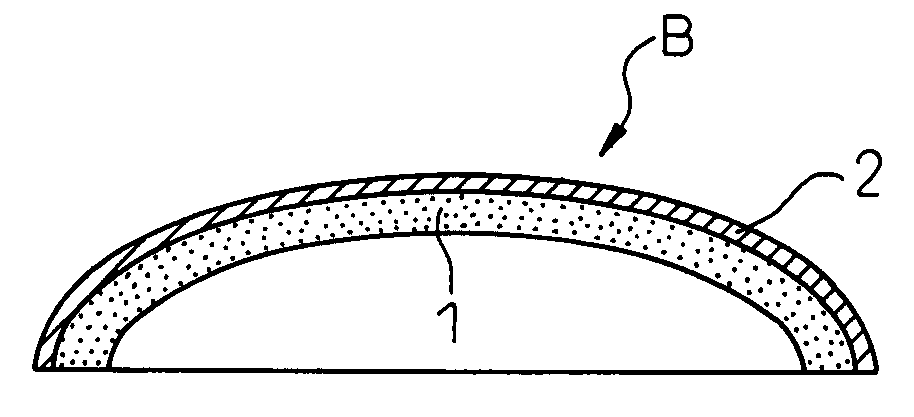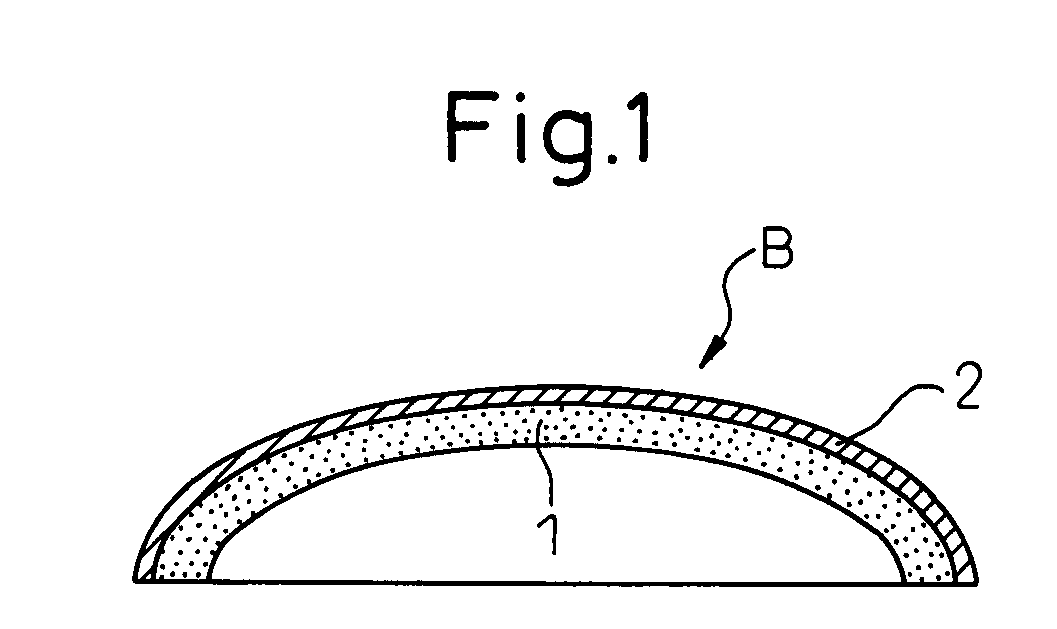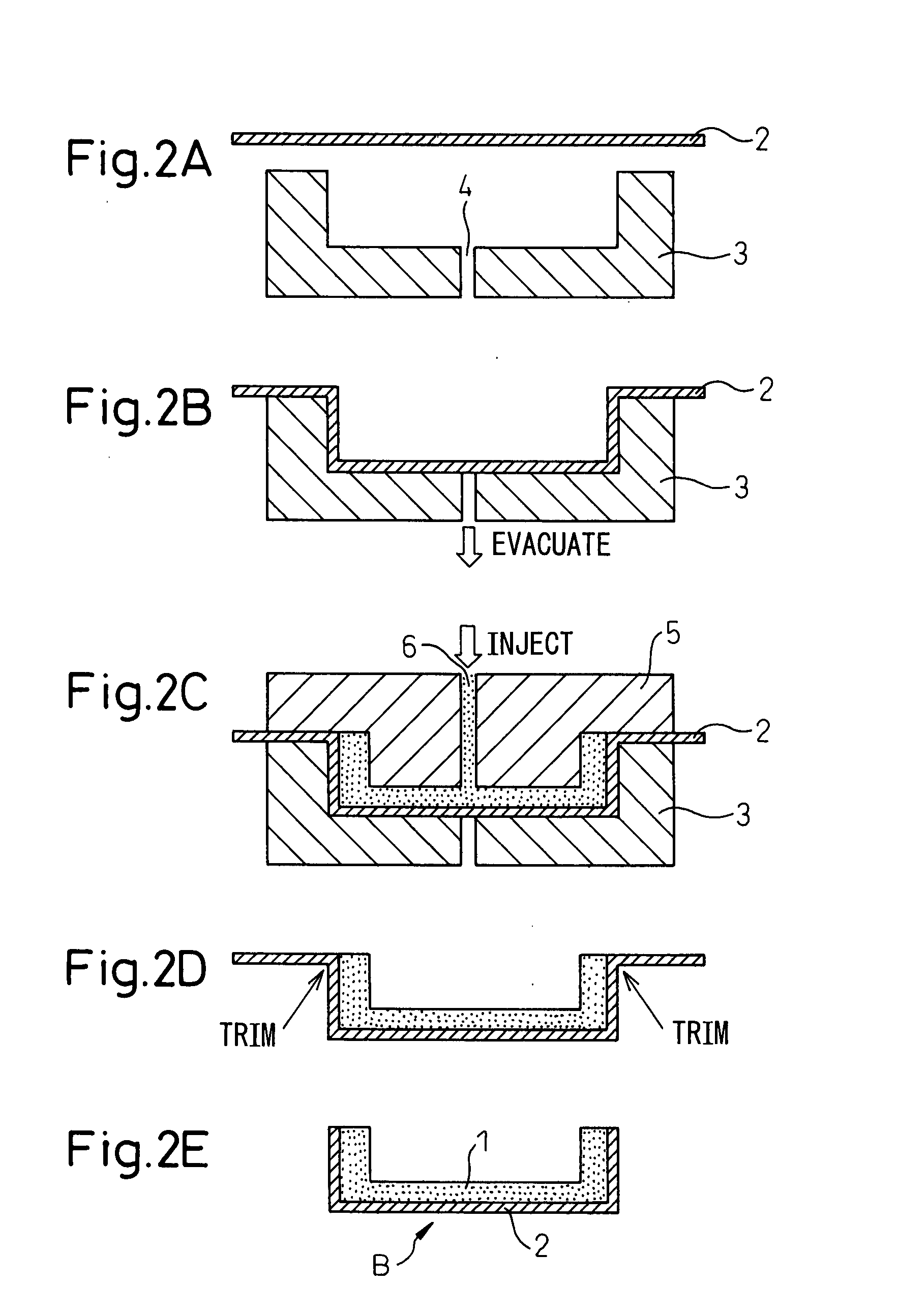Thermoplastic resin casing and method for fabricating the same
a thermoplastic resin and casing technology, applied in the field a method for fabricating the same, can solve the problems of increasing fabrication costs, not being able to cover the entire exterior or interior surface of the casing, and using holography is not a suitable method for fabricating inexpensive casings, etc., to achieve smooth and uniform iridescent change, easy machining, and enhanced appearance of thermoplastic resin casing
- Summary
- Abstract
- Description
- Claims
- Application Information
AI Technical Summary
Benefits of technology
Problems solved by technology
Method used
Image
Examples
first embodiment
[0075]FIG. 5 shows cross-sectional views illustrating processing steps in a specific example of the thermoplastic resin casing fabrication method according to the first embodiment. The thermoplastic resin casing fabrication method according to this specific example is based on the fabrication method shown in the flowchart of FIG. 3, and FIG. 5A shows the condition corresponding to the fabrication step shown in FIG. 4A.
[0076]The fabrication method according to the specific example of the first embodiment shown in FIG. 5A differs from the fabrication method shown in FIG. 4A in that while the cutting die 7 in the earlier described method has been used to simply cut off the excess portion of the polarizing film 2, the fabrication method hereinafter described uses a cutting die 71 having a built-in heater as indicated by a solid circle, and this cutting die 71 is used to cut off the excess portion of the polarizing film 2.
[0077]FIG. 6 shows a flowchart illustrating the sequence of proces...
second embodiment
[0087]The first embodiment described above has dealt with an example in which the excess portion of the polarizing film 2 is cut off at the outer edge of the thermoplastic resin casing, but in the thermoplastic resin casing fabrication method according to the second embodiment hereinafter described, the excess portion of the polarizing film is cut off at a position spaced a prescribed distance away from the edge of the casing, allowing the edge portion of the polarizing film to extend beyond the edge of the casing, and the extended portion of the film is bent inwardly at the edge of the casing at which the extended portion of the film is processed for fixing. The inward portion of the edge of the casing is a portion where no decoration is needed or a portion that is hidden from view when the casing is in use.
[0088]FIG. 8 shows a series of cross-sectional views illustrating a specific example of the thermoplastic resin casing fabrication method according to the second embodiment, and...
third embodiment
[0097]The thermoplastic resin casing fabrication methods according to the first and second embodiments described above have concerned the case where the thermoplastic resin casing is fabricated through two separate processes, that is, after completing the molding by simultaneously forming the polarizing film and the thermoplastic resin in the resin molding process P1, the molding is transferred to the trimming process P2 in which the excess portion of the polarizing film is cut off and the edge portion of the film is processed for fixing. In the thermoplastic resin casing fabrication method according to the third embodiment hereinafter described, the resin molding process P1 and the trimming process P2 are performed as a continuous process so that the polarizing film is processed for fixing at an intermediate step in the thermoplastic resin molding process.
[0098]FIG. 10A is a cross-sectional view showing a mold and an injection molding die used in one specific example of the thermop...
PUM
| Property | Measurement | Unit |
|---|---|---|
| heat | aaaaa | aaaaa |
| pressure | aaaaa | aaaaa |
| shape | aaaaa | aaaaa |
Abstract
Description
Claims
Application Information
 Login to View More
Login to View More - R&D
- Intellectual Property
- Life Sciences
- Materials
- Tech Scout
- Unparalleled Data Quality
- Higher Quality Content
- 60% Fewer Hallucinations
Browse by: Latest US Patents, China's latest patents, Technical Efficacy Thesaurus, Application Domain, Technology Topic, Popular Technical Reports.
© 2025 PatSnap. All rights reserved.Legal|Privacy policy|Modern Slavery Act Transparency Statement|Sitemap|About US| Contact US: help@patsnap.com



